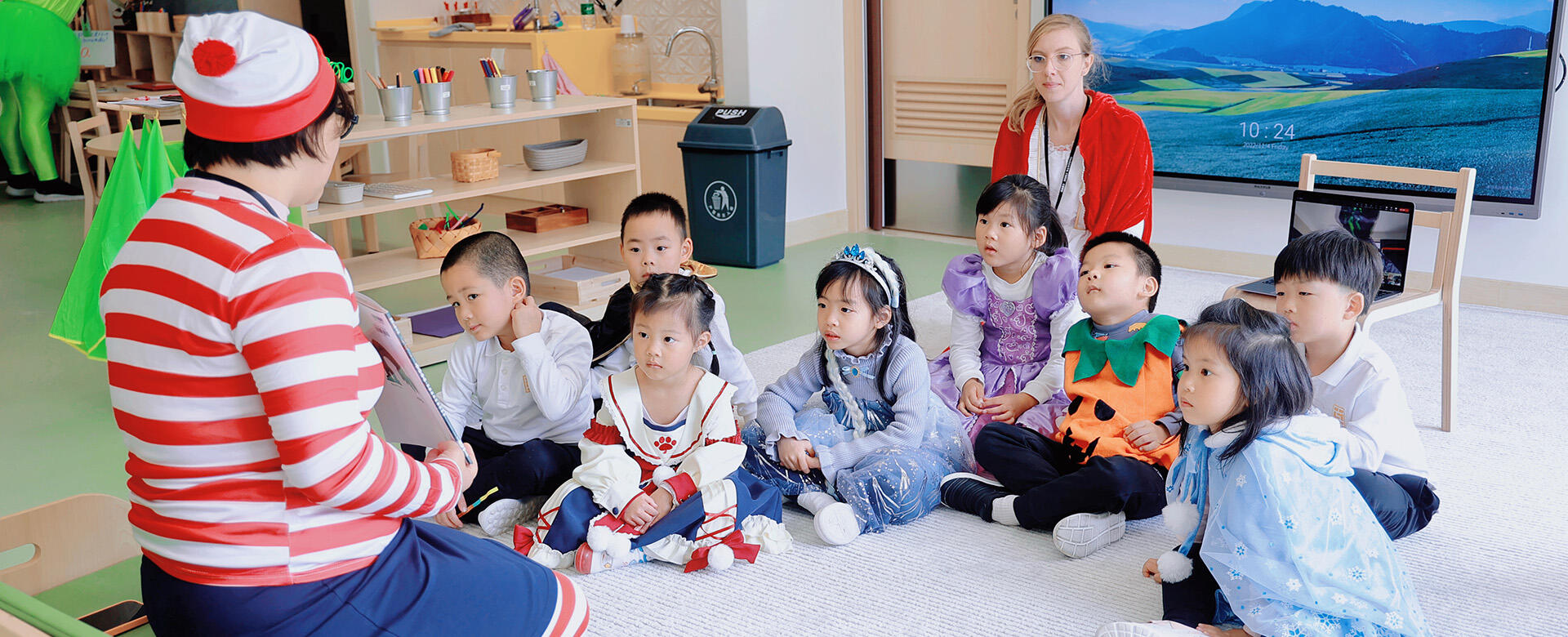
Spring is budding, summer is flourishing, and this splendid spring and summer season is as vibrant and energetic as a child. Just like the change of seasons, our children go through many 'transition' stages throughout their lives, such as changes in grade level, changes in learning difficulty, different priorities for physical and mental growth, and more.
Today we have invited the Chinese and Western Co-Heads of Early Years to talk about this key stage in a child's development: the transition from Early Years into Primary school.
Definition of transition
The transition refers to the move between Early Years and into Primary education. The transition is not only a bridge between the two periods of a child’s life, but also a treasure trove of experiences, habits and abilities that help young children gain lifelong benefits. A good and effective transition can help young children to be well adjusted and prepared physically and mentally for Primary school.
How do we do it?
Many parents often expect the transition to be a 'smooth' and 'seamless' process. However, Early Years and Primary education are different education systems, with differences in the pace of life, learning environment, learning content, learning styles and teacher-pupil relationships. As adults, we should avoid suddenly pushing changes on our children as they move from Nursery to Primary, and instead plan for the transition into the daily life of Nursery.
Current Happenings
At Hiba Academy Nantong, we always take a child-centered approach. We stand from the child's point of view, respect the child's psychology, satisfy the child's interests, encourage the child's self-discovery, and help the child to make a smooth transition in constructing new experiences. At Hiba we are focusing on making connections with Primary and becoming familiar with the new environment of the school. Shared opportunities with Primary staff and children, alongside meaningful introductions to the Primary environment will be our priority for supporting children in feeling ready for this next step.
Development of competences
Transition does not only take place from Nursery to Grade 1, but also in EY2 to EY3, and EY3 to EY4. At Hiba Academy Nantong, we not only help children to acquire knowledge, but also to develop independent learning, critical and creative thinking to meet future challenges through a combination of environmental enrichment and a variety of project studies.
Making connections
In addition to the necessary development of competencies, teachers at key points of the transition help children connect with their upcoming primary school life through a variety of transition activities.
For example, we will lead children to participate in the Primary school's assemblies; share time with current Grade 1s in our Adventures in Nature to develop friendships and also attend the Primary Sports Day to get a preview of the exciting house culture and cheer on our new friends.
We will also take time to explore the Primary school facilities in a meaningful manner: the Library, classrooms, outdoor playground and sport field. Additionally, EY4 students will have their lunch with G1 children in the main Dining Room as they learn about the different structure of the day in Primary.
Thanks to the through school set up at Hiba Academy Nantong, the Primary and the Nursery teachers work closely together to understand the needs of each child to further customise the teaching programme. Primary teachers can also incorporate advice from Nursery teachers to deepen the connections and sense of belonging for the incoming Grade 1 pupils.